The public electric vehicle charger infrastructure in America is a mess. Don't take our word for it. Read perhaps the most well-researched, best-written story on the subject by an early adopter, EV-advocate, and EV expert, Tom Molohgney. Our take-away after reading this amazing deep-dive is that being iced-out of charging spots is the least of anyone's concern who drives an affordable battery-electric vehicle. Aside from the fact that there are too few chargers in too few spaces and many are often occupied by ICE (internal combustion engine) vehicles, here is our take-away from Tom's story:
- The credit card readers are rubbish and often don't work
- The "Fast-charge" networks are still slow compared to any corner gas pump (22 minutes to get 75% charge)
- The charging standards are still in upheaval and there is no universal fast-charger standard (CHAdeMO is a failure and hated by the charger companies)
- The supply chain to charger companies is immature and unreliable (Tom sees it shrinking in 2020)
Why in the world would anyone living in an apartment, condo, or multifamily with no home charger ever buy a battery-electric vehicle (battery-only) knowing that the charger network is a complete mess? Particularly when they can go green and drive a hybrid? The Prius gas-only hybrid still outsells the Leaf, Bolt, Niro EV, i3 and Clarity EV combined. That is no accident.
Aside from the apartment dwellers without access to a home charger, why would a homeowner with a charger at home ever bother to put themselves in a position where they needed to rely on this network? Instead of buying a battery-only vehicle, why not simply buy a plug-in hybrid electric vehicle (PHEV) and use an inexpensive home charger to top off the limited battery while sleeping? If a functioning, available, public charger presents itself, great. Charge up. Why not? Well, maybe one reason not to is that some suffering BEV owner may need that spot more than you do since they are a slave to the cord and you are not, having the ability to drive home as a hybrid. Don't be shocked to hear this, but BEV owners on their forums think PHEVs are the enemy. "They take our spots!" "They still use gas!"

Tom's story highlights some of the experiences I have had trying to break into the public charger world. I test EVs regularly and have tried (usually in vain) to use the Boston Metro Area public charger network. Have I charged EVs on the road? Sure. That image at the top of the page is my test Outlander PHEV parked next to an idiot in a Honda Odyssey taking up one of the two available public chargers on the MIT campus. That is called being "iced-out" of a spot. A selfish person in a gas-only car takes up a charger slot so they can park their vehicle. I lucked out. I was able to roust a live-parked ICE car out of the spot I took. That's fun. Being in a conflict with a person over a "special" parking space. While you have an 8-year old daughter in the back seat.
Related Story: Honda Pulls Back 2019 Clarity PHEV & Chevy Kills Volt EREV - Tell Us Your Theories As To Why Popular EVs are Going Away
In addition to being iced-out or arriving at my destination to find that the charger was occupied by EVs charging for hours on end (I have watched spots off and on while at my destination and seen the same vehicles remain on the charger for many hours at a time) I have also found that trying to use a credit card is almost always useless. One needs to use apps to pay and charge. That's a joy. Adding more apps to a phone with a gazillion of them. So you can pay at a specific-brand charger. Should you stumble upon on an open bay. Made by that specific brand of charger.
Until I read Tom's story I felt that my own experiences were simply my being lazy. Maybe I should have looked harder for spots. Maybe I should plan my trip and my day around driving to a charger in hopes it will be open when I arrive and then try to fit my work and free time around that. Stepping back from those rediculous thoughts after reading Tom's story, I feel as if my experiences finding chargers difficult to use are not just selfishness on my part but the reality for others as well.

Plug-in hybrid electric vehicles like the new RAV4 Prime and Ford Escape PHEV will enable family owners to drive an affordable, practical EV without all the hassles associated with public charging. They can be charged at home with no expensive wiring or special equipment and these vehicles and others like them will get most commuters to work and back without the need to use any gasoline. They can then take that same crossover on a journey anyplace they wish never needing to worry about charging on that road trip. Those who live in cities can own a PHEV like the top-selling Prius Prime (which outsells every comparably-priced BEV) and never need to worry they won't find an available charging spot.
If you think that "lack of funding support" for EVs is the reason the public charger situation is still a mess, read Tom's words: "...simply throwing a ton of money at a problem doesn't mean you'll get a favorable result, as witnessed by Ecotality's failure a decade ago when they received over $135 million in grants and economic stimulus funding to install public EV charging infrastructure. For those that remember the original Blink network (it has since been taken over by Car Charging Group), you may remember how unreliable the equipment was and how poorly their customer service performed. The bottom line is you can have all the money in the world and still fail to achieve your goal without the right people and proper planning."
Modern EVs in America have been on sale since 2010. A decade. And yet, the public charger infrastructure is still spotty at best and mess at worst depending upon where you live. Like we say, don't take our word for it.
John Goreham is a life-long car nut and recovering engineer. John's focus areas are technology, safety, and green vehicles. In the 1990s, he was part of a team that built a solar-electric vehicle from scratch. His was the role of battery thermal control designer. For 20 years he applied his engineering and sales talents in the high tech world and published numerous articles in technical journals such as Chemical Processing Magazine. In 2008 he retired from that career and dedicated himself to chasing his dream of being an auto writer. In addition to Torque News, John's work has appeared in print in dozens of American newspapers and he provides reviews to many vehicle shopping sites. You can follow John on Twitter, and connect with him at Linkedin.



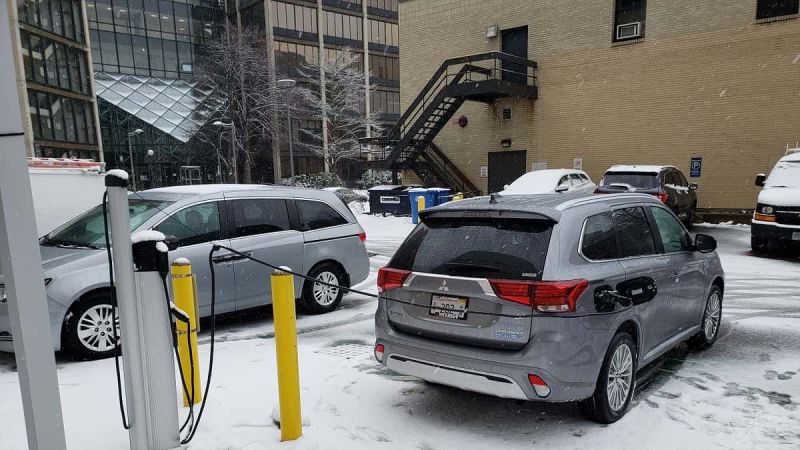




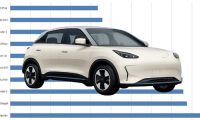
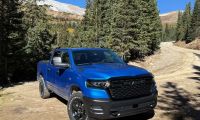
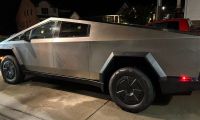
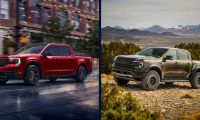
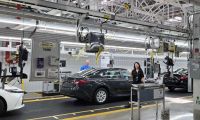
Comments
These are all good points. I
Permalink
These are all good points. I've had 4 PHEVs, and have a Cadillac ELR PHEV as my daily commute car now. I can attest to the fact that plug in hybrids offer great freedom, working as a pure electric car most of the time, but having the ability to drive unlimited distances and experience zero range anxiety. I am also puzzled by BEV enthusiasts who try to discredit PHEVs and hybrids. The true value of electrification is to move away from dependence on fossil fuels, and BEV enthusiasts who do not recognize that 97% of new vehicles sold today are purely gas/diesel cars today, should know that shooting down part of the 3% of other electrified cars who also want to make a positive change, only hurts the greater cause of getting the 97% of gas only drivers to want to buy an electric car. Why fight for crumbs? With regard to the public charger situation, that was an interesting read about Electrify America's problems with trying to install so many fast chargers in such a short time frame. One drawback of most all PHEVs today is that they have not supported DC fast charging. Hopefully that will change for the newer PHEVs. A few years ago I was talking with someone who was working with a power company who wanted to spend many millions of dollars (and charge their customers for the project) to install hundreds of electrical chargers. But to my eyes the fatal flaw of their plan was that they wanted to have over half of the new chargers be level 1 chargers! Meaning 110V, and charging at 3-5 miles of range added per hour. To me it was a big waste of money, and I suggested that they have a minimum of Level 2 (220V, 11-70 miles of EV range added per hour) and work on adding DC fast chargers. But because there was no one established standard for fast charging (outside of proprietary Tesla Superchargers) they couldn't commit to having ANY fast chargers. One point in the favor of BEVs that I think is often ignored is that the range of BEVs has been steadily increasing past 200 miles. So even though there are certainly many people who cannot charge at home, there are millions of people who can. And if your BEV has a 200+ mile EV range and you can charge at home, then most likely you can drive every day and not ever worry about running out of power. The times where most people need to drive over 200 miles in a day are extremely rare, and most people today who buy a BEV also have a gasoline car for the rare, long road trip. I would have no problem (other than cost) in owning a BEV, but I am so pleased with the plug in hybrids that I have had (first two leased, then last two bought) that I cannot see going back to a non-electric car in the future. For automakers, the uncertainty (that is over-publicized on the internet) of BEV charging problems means that they need to build BEVs with the biggest batteries possible, but it is fairly easy for them to also build PHEVs and regular hybrids, which offer many of the economical advantages of electric cars, but also have the security blanket of gasoline, which remains the world standard of fuel/energy for vehicles today. I believe that the best path to a quick migration to supporting electric vehicles is to NOT fight over which EV technology is better, trying to put down competing hybrid, PHEV, FCEV (fuel cell) and BEV models, but to work together to encourage ALL EV technologies to succeed. Showing how each EV technology helps in moving away from fossil fuel dependency.
Amen! PHEVs offer a great
Permalink
Amen! PHEVs offer a great alternative to full EVs, for the many places (i.e. vast majority of the world) that don't have a good charging infrastructure. You can have CO2 emissions as low as full EVs (when considering lifetime emissions, and with typical powergrid) , without the range anxiety !
Great article, pretty much
Permalink
Great article, pretty much nails the reality of things right on the head.
Since 2001, we have owned or
Permalink
Since 2001, we have owned or leased 5 electrified vehicles, including a hybrid, a PHEV, and 3 BEVs. The BEVs are vastly superior to the PHEV in terms of power, reliability, design, and electronics. The PHEV is a mediocre ICE vehicle and a poor EV. Ours was in the shop 8 times in 2 years.
We have charged on the public network over 1,600 times and have only had a few dozen problems. The real "mess" is what fossil fuels have done to our atmosphere. We have both CCS and CHAdeMO connectors and CHAdeMO is far more reliable because it locks in place 2 ways - CCS always faulting out due to torque applied to loose connector by heavy cables.
I've had a PHEV and 1 issue
Permalink
In reply to Since 2001, we have owned or by Mike (not verified)
I've had a PHEV and 1 issue in 3 years ..my heated steering wheel stopped working. It was replaced under warranty but the loaner they gave me was a 1.4 liter turbo gasser. That was the biggest let down of owning the car this far.
Other than that, lifetime I get about 2,000 miles per tank of gas since I charge it at home every night.
If i could get like 50 miles instead of 18-27 (depending on weather) then I would probably get closer to 5,000 miles between charges.
I love the freedom of PHEV much better than having to waste time charging while on the road. I woke up, drove 160 miles (mostly highway up the mountains at 75-80 mph) and did a 1/2 marathon, then drove back early in the afternoon without stopping. I knew the closest Tesla (destination hotel charger) was only about 4 miles away but I got to park only about 1/8 of a mile from the start/finish line.
Everyone has different needs..which is why we have so many options. I don't need a faster car, my car already tops out at over 100mph. I also never had a problem merging onto a freeway because I look ahead and hammer the accelerator if I see the opening. I've seen plenty of slow old Corvette drivers stop at the end of a merge ramp to wait for an opening. It's not all about speed, it's about timing.
While I agree with the
Permalink
While I agree with the article as it relates to most of the marketplace, it’s a glaring omission not to mention Tesla and how they have solved the problem. This article implies that this is the only reality. Tesla has a fast and reliable supercharging network that is growing worldwide while established manufacturers are waiting for a government solution to be provided. Tesla owners don’t not have the problems anywhere near to the extent described in this article. Most Tesla Supercharging locations have 8 or more bays per location. The Model 3 starts at $40,000 and the total cost of ownership makes it a better proposition than many ICE vehicles costing less.
I have nothing against PHEVs and I do agree that they are a superior choice for the environment than any ICE vehicle, but to imply as this article does that a full EV is not a viable option is incorrect. The “problem” is that the only viable EV options available today are all sold by Tesla.
Bob, thank you for adding
Permalink
In reply to While I agree with the by Bob Calvo (not verified)
Bob, thank you for adding this. Spot on. I would add that another "problem" is that the outstanding vehicles Tesla offers can cost shoppers on a budget literally double what a Bolt or Leaf do in EV-target states when incentives are factored in. Nobody has ever proven that a BEV costing consumers under $30K is a viable, profitable product. Yet. ps - The least expensive Model 3 listed on Tesla's website today costs $41,190 in a single color and is available only by special order. There is no federal tax deduction for that model.
This really is an
Permalink
In reply to While I agree with the by Bob Calvo (not verified)
This really is an overstatement as well. While Tesla clearly has the most capable electric cars and reliable network, there are still gaps remaining to be fixed as they grow (the Dakotas being a prime example). They're also less abundant in big cities unless you have the CHAdeMO and J1772 adapters to hand, which is still falling back on the public network that is being decried as inadequate.
The reality is simply that Electrify America just engaged in a massive buildout without vertical integration. Their growth rate is quicker than Tesla at a comparable moment in the Supercharger network's history and the speed is quicker, albeit with very few cars out there to take advantage of it as yet. For regular daily driving under 250-300 miles, the public L2 network is excellent in many parts of the country, especially cities. It that's not the case, why do we see so many Tesla drivers choosing to use ChargePoint, Volta, and other non-networked L2 stations?
The idea that Tesla is the only manufacturer providing "viable" EV options is rebutted on a daily basis by the hundreds of thousands in North America who drive non-Tesla electric vehicles for their regular routine. If you need the public network locally, it's well built out in most places those EVs operate. If you need the long-distance network, it still has its issues but will now get you across the country, albeit nowhere near as conveniently as will a Tesla. And if you have home charging, all of this is a moot point other than the occasional long trip.
I've got to agree with Steve
Permalink
In reply to While I agree with the by Bob Calvo (not verified)
I've got to agree with Steve here. Although the SC network gets a lot of press and respect, as it should, the public network has expanded quickly. Just use PlugShare and look at just the EA and Chargepoint networks combinded and compare that to the SC network. It is clear that there are more public charging sites than SC sites. The SC network is nicely distributed and present in a few areas where the public network is still thin, but there are many more public options and easy access to most areas. There isn't much of an advantage to the SC network anymore. Give it 2 more years and the public network will be clearly better. There are currently more chargers on the SC network, but also many more cars that must use it.
I know this won't be the most
Permalink
In reply to While I agree with the by Bob Calvo (not verified)
I know this won't be the most popular comment....
Legacy car dealers could convert some of the spaces in their lots for service/loaner vehicles for EV chargers and parking.
If less cars are getting service, why not adapt and figure what else you can sell? Put a Starbucks/ office station at the dealers. They no longer have to give free charging since Tesla doesn't give it to the cheaper cars (model 3).
I bought a Bolt this year,
Permalink
I bought a Bolt this year, but only because there was no good PHEV SUV available. The Outlander has poor gas efficiency and low EV range, and there were no other options. But, the upcoming RAV4 Prime will surely change that. And, it achieves most of the environmental benefits of any BEV with much greater flexibility. Anyone who doesn't buy a BEV because of charging concerns should seriously consider the new PHEVs. As for charging, the EA network is expanding rapidly, much faster the Tesla's SC network. In a couple of years it will surpass it. Reliability issues are being addressed. But, I wouldn't want to be without a home charging option with a BEV.
Funny the difference one can
Permalink
Funny the difference one can experience with the public charging network... we've been driving a Chevy Bolt EV around Boston metro north and west for the past three years and praising the charging network (L2, at least, which is the most appropriate on a local travel basis) here, relative to other cities we visit like NYC.
It's so affordable and readily available as to be more cost-effective than charging at home (8 cents per kWh average on public vs. 15 cents per kWh at home), with more stations going in all the time. Grocery stores including Shaw's, Wegman's, and Star Market have all added complimentary L2 charging, while the local AMC theater also has the same Volta units (ad-supported), so we can juice up while watching a movie and come out to a near-full battery three hours later!
I think a key distinction is to be made between the ambitiously expanded and expensive DC fast charging network referenced in the original (and exceptional) article by Tom Moloughney and the slower-yet-ubiquitous L2 network, which grows gradually and requires minimal investment to install/expand. The former is experiencing growing pains for obvious reasons... this time last year there were a handful of locations nationwide, now in 2020 there are nearly 400. Electrify America has been a hot mess of a network at times over the last 12 months, but we just completed 700-miles of holiday travel to Ohio and back with no major disruption on their stations. Meanwhile, locally, we're driving for around 4 cents per mile thanks to ample L2 charging and couldn't be happier! As much as I appreciate the bridge technology a PHEV provides and the need for some to fall back on gas for more convenient road-tripping, there's just no way we could go back to lugging around a combustion engine and limited all-electric miles just to save a couple of hours on a couple of long journeys.
I wish I had Steve's rate for
Permalink
In reply to Funny the difference one can by Steve (not verified)
I wish I had Steve's rate for electricity. I live in Metro Boston (Norfolk County) and my rate from Eversource is 23 cents per kWh. In terms of cost per mile, I'm better off with a hybrid. There is no charger at Roche Brothers Millis where I shop, none in my home town. The local Patriots Place Showcase Cinema had a single charger nearby in the mall parking area (separate from cinema parking. There are 20K spots at this location) The Google reviews say it's broken and it has a 1-star rating. There is a charger at one location that I frequent in Cambridge (on a Sunday) but it has been full every time but once that I had an EV to charge there. I agree that it is funny how two folks in the same general region can have a different public charging vibe. The home I plan to move to has a 240V outlet in the garage. That will be my near-term charger solution for test vehicles. I visited the closest Supercharger location in Dedham Mass in March when I test-drove a Tesla. Every bay was full. Vehicles waiting. This was late morning on a workday. I took a picture and have used it in stories a few times.
If you're ever up in
Permalink
In reply to I wish I had Steve's rate for by John Goreham
If you're ever up in Lexington, John, drop me a line so I can hop over and buy you lunch. We can both charge if you grab a PHEV (maybe the RAV 4 Prime... I'd love to take a look!) at one of the 5 ChargePoint stations (recently expanded from just 2, as they were regularly busy, although never ICEd nowadays, in my experience). Charging is free, but you'll have to stump up the 50 cents an hour for parking ;-)
This article is pure hog wash
Permalink
This article is pure hog wash. Most people mostly charge at home. When we occasionally need to charge outside, we can charge about hundred miles in less than ten minutes. New hybrid lithium and super capacitor batteries can be charged faster than gasoline pumps. Tesla bought Maxwell Super Capacitors, which will be incorporated in newer Tesla cars. While our opinions might vary, we should stick to the facts about current technology.
John Bliss, step back a bit
Permalink
In reply to This article is pure hog wash by John Bliss (not verified)
John Bliss, step back a bit for the issue and realize that your statement "Most people charge at home." is not close to true. Most people, around 99% of vehicle owners in America, never charge anywhere. Because the car they drive uses liquid fuel and is not an EV. With regards to your comments on "current technology," how many 2020 model year vehicles for sale this year have a supercapacitor battery. Zero. Easy on the Hogwash. The Inside EVs author is easy to call one of the top experts on EV adoption alive today. His points are well researched.
While all these points are
Permalink
While all these points are valid, the framing is a bit skewed. It's not that one is better than another. It's that each offers different solutions for their target demographic.
I own a Bolt and a gas minivan. We are a multigenerational home living with home charging access. However within our vicinity there are 4 options for free charging and many paid options. After having owned the BEV for almost 2 years now, we've saved a lot of money not paying for mileage and maintenance of an gas engine. This cost-benefit alleviated the payments for the vehicle, which is now our primary mode of transportation.
It's not for everyone but it works out great for us.
Why the industry is not
Permalink
Why the industry is not moving towards Hydrogen cars?
How about standardized battery swapping stations? Robotics to rescue.
Great article. Big oil didn't
Permalink
Great article. Big oil didn't give up yet. But they will the minute some pumps get converted to dual service.